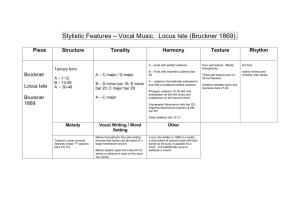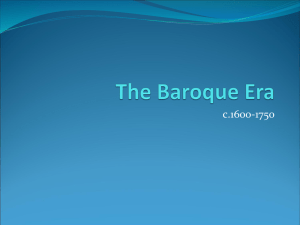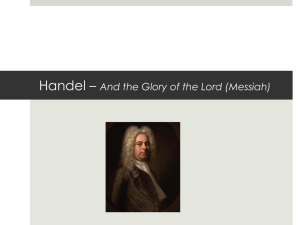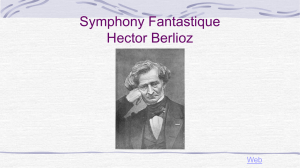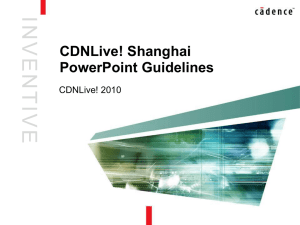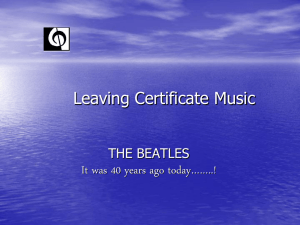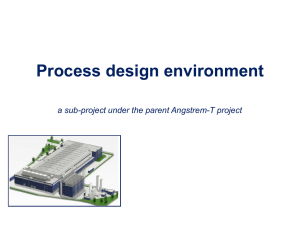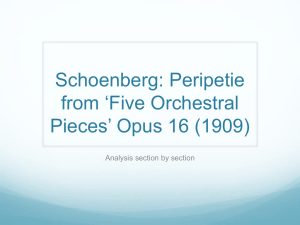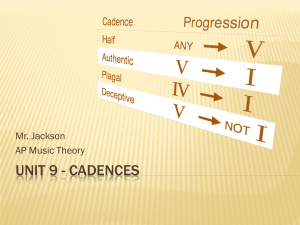Handel analysis (includes cadence). - The Parker E
advertisement
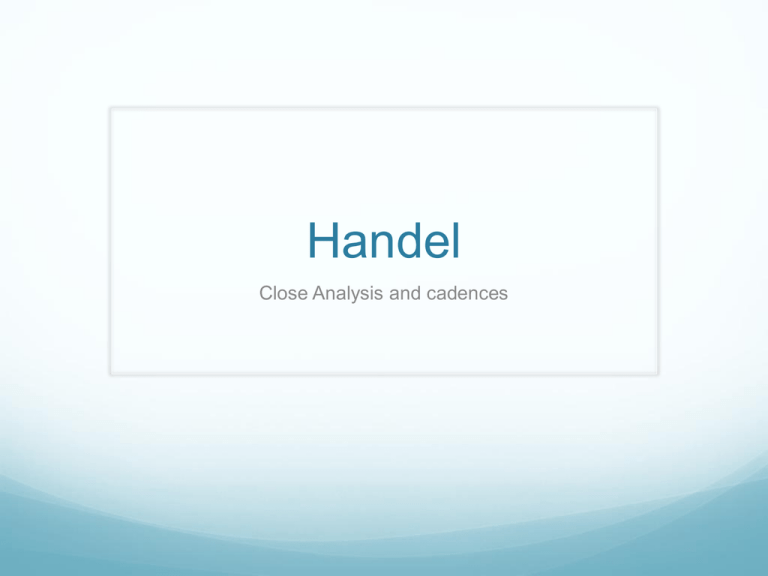
Handel Close Analysis and cadences Cadences A cadence is a type of musical ending. It’s like a full stop or comma at the end of a sentence. There are 4 types you will need to be able to recognize Perfect Cadence: Musical full stop. The Music sounds finished. Chords V to I (5 to 1) Imperfect cadence: Musical comma. Music is just resting, feels unfinished. Commonly chords I to V (1 to 5) or IV to V (4 to 5) Cadences A cadence is a type of musical ending. It’s like a full stop or comma at the end of a sentence. There are 4 types you will need to be able to recognize Plagal Cadence: Musical full stop. Has an ‘amen’ feel, softer ending. Chords IV to I (4 to 1) Interrupted cadence: You expect a perfect cadence, but instead of V to I, you get V to VI (5 to 6) Bars 1-11 Orchestral intro. Ideas 1 and 2 stated Uses a hemiola rhythm in bars 9-10 Hemiola: Device used near cadence points where notes are grouped in 2 beats Suspensions are used at bars 9-10 Suspensions: Where a note from the previous chord is held into the next bar and then resolved The introduction ends with a perfect cadence The harmonic rhythm (how many chords per bar) is either 1 per bar, or 2+1 Bars 11-14(beat 1) Alto enters with Idea 1 (mf) Mainly syllabic Perfect cadence in A major bars 13-14 Bars 14-17 Loud (f) chordal response from sopranos, tenors and basses Homophonic Texture Melody is heard in the bass, which often happens in the chordal/homophonic sections Perfect cadence at bars 16-17 Bars 17-22 Imitative entries of idea 2: Tenor Bar 17 Bass Bar 19 Soprano Bar 20 Bars 21-22 modulating (changing key) to E Major Bars 22-33 In E major Ideas 1 and 2 combine Idea 1: Tenor (bar 22) and Soprano (bar 25) Idea 2: Alto (bar 25) and tenor (bar 28) This results in 2 part counterpoint and has a polyphonic texture Lots of perfect cadences in this section (e.g bar 24-25) Bars 33-38 Strong, 4 part homophonic version of idea 1 in E major Melody is in the bass again “Shall be revealed” is tagged onto the end of idea 1 Bars 38-43 Orchestral link using idea 2 “shall be revealed” Bars 38-39 use sequences Bars 41-42: Hemiola rhythms Bar 42: Suspension Ends with a perfect cadence at 42-43 Bars 43-50 Idea 3 introduced (started by the alto) Thin vocal texture in comparison to chorus sections Back to A major A major emphasized with strong A C# E crotchet movement in the bass (bars 43-45) Perfect cadence in A major (46-47) Bars 51-57 Tenor and bass introduce Idea 4 Repeated notes act as a tonic pedal Sopranos sing idea 3 above this, creating a 4 part polyphonic texture Perfect cadence ends the section Bars 58-73 Sopranos launch idea 4 on E Alto tenor and bass enter at bar 59 with idea 3 This small section ends with a plagal cadence at bar63 We then have lots of imitation, during which the key modulates to E major Bars 74-83 Short orchestral link based on idea 1 takes us to a 4 part homophonic statement of idea 1 in B major Idea 3 follows, but in a different texture (what texture is this?) All parts come together in strong homophony on the word ‘together’ This is a pause as it uses an imperfect cadence and momentum carries on straight afterwards Bars 83-102 B major Sopranos sing idea 4 on top F#. Every time this idea comes back, the pitch is higher (A E F#) Handel now brings all 4 musical ideas together Full texture at bars 93-94 Bars 93-102: Handel uses ideas 1,2 and 4 in different parts During this section, music modulates to E major Ends with a perfect cadence in E major (Bars 101-102) Bars 102-124 A Major Altos lead with idea 3, though this is fragmented to 1 bar echoes in the tenor and bass to reduce the texture before the final section 105-106: Parts added to emphasize words “shall see it together” Over this the sopranos have idea 1, reaching a climatic top A at bar 110 on the word ‘lord’ This is answered by the three lower parts Imitative entries follow At bars 118 idea 3 is heard, with idea 4 in the bass on the note of E (dominant pedal) Section ends with an imperfect cadence Bars 124-134 Idea 4 dominates this section, signaling the end This time we hear it on the tonic note (A) This section has already been hear at bars 51-55, expect the voices have swapped parts (invertible counterpoint) The pieces comes to a sudden halt at bar 133. Handel often does this for dramatic effect Bars 134-138 A dramatic 3 beat rest in all voice parts leads to the final grand and slow (adagio) plagal cadence in 4 part homophony adding emphasis to the words “Hath spoken it” Listening and Appraising How is the joyful mood or ‘affection’ of this chorus achieved by Handel? Name 3 different types of musical texture that appear in this chorus Name the 4 voice parts that perform this chorus What instruments accompany the singers? How many different ideas are used by Handel? Identify 2 ways that the last 3 bars are given a dramatic ending Give bar numbers where you can hear a) One voice part b) two voice parts c) Three voice parts d) 4 voice parts In general how are the words set to the music? How is the word ‘revealed’ treated throughout the piece?
